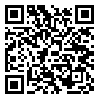Thu, Apr 18, 2024
[Archive]
Volume 4, Issue 4 (12-2014)
Iran J Ped Hematol Oncol 2014, 4(4): 131-140 |
Back to browse issues page
Download citation:
BibTeX | RIS | EndNote | Medlars | ProCite | Reference Manager | RefWorks
Send citation to:



BibTeX | RIS | EndNote | Medlars | ProCite | Reference Manager | RefWorks
Send citation to:
Mansourabadi A, Moogooei M, Nozari S. Evaluation of Distress and Stress in Cancer Patients in AMIR Oncology Hospital in Shiraz. Iran J Ped Hematol Oncol 2014; 4 (4) :131-140
URL: http://ijpho.ssu.ac.ir/article-1-181-en.html
URL: http://ijpho.ssu.ac.ir/article-1-181-en.html
Abstract: (4006 Views)
Background
Routine screening for distress is internationally recommended as a necessary standard for good cancer care given its high prevalence and negative consequences on quality of life. This study attempts to support validation of Distress Thermometer (DT) in Shiraz, Iran and in the second step to investigate privilege/priority of DT over other referent criterion measures.
Material and methods
In total, 58 outpatients with cancer were recruited from AMIR Oncology hospital in Shiraz, Iran. Each participant completed the DT and a list of 34 possible cancer-related problems (the Problem List), the Hospital Anxiety and Depression Scale (HADS), the 18-item Brief Symptom Inventory (BSI-18), and a short visual analog scale to determine the understandability of the tools.
Results
Characteristic analysis revealed that DT cutoff scores ≥4 and ≥5 had optimal sensitivity and
specificity relative to both HADS and BSI-18 cutoff scores for general caseness and more severe psychological distress, respectively. Patients with DT scores ≥4 (cases) were more likely to be women suffering from psychological problems in the past experience stressful events in the 3 years ago and encounter more family, emotional, and physical issue related to cancer or cancer treatment (p=0.02).
Conclusion
Patients indicated that the DT was easier to fill out and to understand than the HADS, but not the BSI-18. The DT was identified as a simple and effective screening instrument for detecting distress in Iranian cancer patients as a first step toward more properly referring those in need to psychosocial intervention.
Keywords: Distress, Stress, Distress Thermometer, Brief Symptom Inventory, Hospital Anxiety and Depression Scale
Type of Study: Research |
Subject:
Heart
Received: 2014/12/20 | Accepted: 2014/12/20 | Published: 2014/12/20
Received: 2014/12/20 | Accepted: 2014/12/20 | Published: 2014/12/20
| Rights and permissions | |
 |
This work is licensed under a Creative Commons Attribution-NonCommercial 4.0 International License. |



